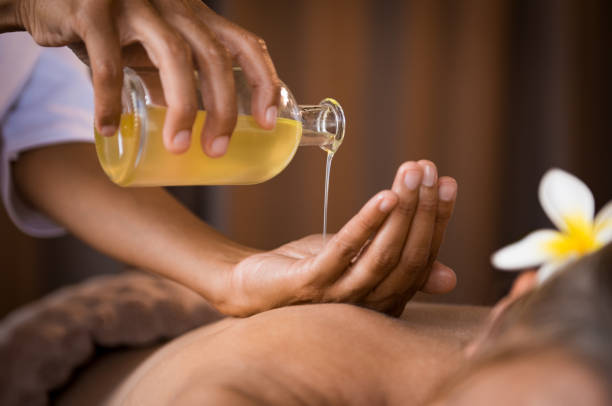Discover the Benefits of Massages for Stress Relief and Health
The benefits of massages extend far beyond simple relaxation; they play a crucial role in stress relief and overall health. From enhancing mental well-being to improving physical health, massages offer a holistic approach to self-care that anyone can enjoy. Here’s a closer look at the various advantages of incorporating massages into a regular routine.

Techniques that Promote Relaxation
Massage therapy encompasses a variety of techniques specifically designed to induce relaxation and reduce stress. Swedish massage, one of the most common approaches, uses long, flowing strokes to release muscle tension and improve circulation. Deep tissue massage targets deeper muscle layers and connective tissue to release chronic patterns of tension. Other relaxation-focused techniques include hot stone massage, where heated stones help warm and loosen tight muscles, and aromatherapy massage, which combines gentle pressure with essential oils to enhance relaxation through multiple senses. Techniques like Shiatsu and acupressure work with the body’s energy pathways to restore balance and promote a sense of calm. The rhythmic nature of these massage movements activates the parasympathetic nervous system—often called the “rest and digest” system—which counters the fight-or-flight response triggered by stress.
Physical Health Advantages
The physical benefits of massage extend far beyond temporary relaxation. Regular massage therapy has been shown to improve circulation by enhancing blood flow throughout the body, which helps deliver oxygen and nutrients more efficiently to tissues while removing metabolic waste products. This improved circulation can accelerate healing of injured muscles and reduce inflammation. Massage also helps decrease pain by releasing endorphins—the body’s natural painkillers—and reducing the production of stress hormones like cortisol. For those suffering from chronic conditions such as fibromyalgia, arthritis, or lower back pain, massage can provide significant relief by addressing both symptoms and underlying muscle patterns. Studies have demonstrated that massage therapy can lower blood pressure, improve sleep quality, and enhance immune function by increasing the activity of natural killer cells, which help defend the body against pathogens.
Mental Well-Being and Emotional Balance
The effects of massage therapy extend deeply into psychological health. During a massage session, the brain releases dopamine and serotonin—neurotransmitters associated with positive mood and happiness—while reducing cortisol levels. This neurochemical shift helps explain why massage is effective at alleviating symptoms of anxiety and depression. Regular massage has been shown to reduce feelings of stress and anxiety by as much as 30% in some studies. Many clients report improved mental clarity and focus following massage treatments, as the reduction in mental tension allows for better cognitive function. Massage provides a rare opportunity for mindful presence, encouraging recipients to focus on physical sensations rather than racing thoughts. This mindfulness component creates a meditative aspect to the experience that can help break cycles of rumination and worry. For many individuals, massage provides a safe space for emotional release, allowing buried tensions to surface and dissipate in a supportive environment.
Enhancing Flexibility and Performance
Athletes and active individuals often incorporate massage into their training regimens to optimize physical performance. Regular massage helps maintain muscle flexibility and joint mobility by breaking up adhesions (knots) in muscle tissue and fascia—the connective tissue surrounding muscles. This increased flexibility can improve range of motion and prevent injuries caused by tight, restricted movements. Sports massage techniques specifically target areas of tension that develop during athletic training, helping muscles recover more quickly between workouts. Pre-event massages can prepare muscles for intense activity by increasing blood flow and warming tissue, while post-event massages speed recovery by flushing out lactic acid and reducing inflammation. Beyond athletes, everyday individuals can benefit from increased physical capacity and improved posture resulting from regular massage therapy. The increased body awareness that develops through massage helps people recognize and address movement patterns before they cause pain or injury.
Combatting the Effects of Sedentary Lifestyles
Modern office environments and technology use have created increasingly sedentary lifestyles, leading to specific physical challenges that massage can address. Prolonged sitting creates patterns of tightness in the hip flexors, hamstrings, and lower back, while computer use often leads to forward head posture and rounded shoulders. Regular massage helps counteract these patterns by releasing tight muscles and encouraging proper alignment. For those experiencing “tech neck” or repetitive strain injuries from keyboard use, targeted massage techniques can provide significant relief and prevent further damage. Massage also stimulates circulation in areas where blood flow becomes restricted during prolonged sitting, helping prevent issues like deep vein thrombosis in extreme cases. By addressing these modern physical stressors, massage helps maintain functional movement patterns despite the constraints of contemporary work environments. Additionally, the awareness gained through massage can help individuals make better ergonomic choices and take preventive breaks during long periods of sedentary activity.
Massage Therapy Options and Cost Considerations
The accessibility of massage therapy varies widely depending on setting, provider experience, and geographical location. Understanding the range of options can help individuals find the right fit for their needs and budget.
| Massage Type | Average Duration | Typical Price Range | Common Benefits |
|---|---|---|---|
| Swedish Massage | 60 minutes | $65-$120 | General relaxation, improved circulation |
| Deep Tissue | 60 minutes | $80-$150 | Chronic pain relief, addressing specific muscle issues |
| Hot Stone | 75-90 minutes | $100-$175 | Deep muscle relaxation, improved circulation |
| Thai Massage | 90 minutes | $90-$160 | Enhanced flexibility, energy balance |
| Medical Massage | 60 minutes | $85-$165 | Treatment of specific conditions, often insurance billable |
| Chair Massage | 15-30 minutes | $20-$60 | Quick stress relief, workplace wellness |
Prices, rates, or cost estimates mentioned in this article are based on the latest available information but may change over time. Independent research is advised before making financial decisions.
Many health insurance plans now offer partial coverage for massage therapy when prescribed by a physician for specific medical conditions. Additionally, flexible spending accounts (FSAs) and health savings accounts (HSAs) often allow payment for therapeutic massage services. Some employers provide massage benefits through wellness programs, while massage schools frequently offer discounted sessions with supervised students. Membership programs at massage clinics can reduce per-session costs for those seeking regular treatments.
The long-term value of massage extends beyond immediate relaxation, potentially reducing healthcare costs associated with stress-related conditions and chronic pain management. When considering massage therapy as part of a wellness routine, evaluating these various options and potential insurance coverage can make this beneficial practice more financially accessible.
This article is for informational purposes only and should not be considered medical advice. Please consult a qualified healthcare professional for personalized guidance and treatment.




